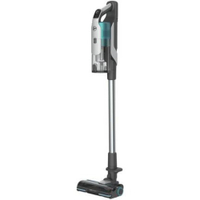How to clean curtains - easy ways to refresh your curtains without damaging them
Get your curtains spotless and dust free with our easy how to


If you're noticing a flurry of dust appear every time you draw the curtains, it's probably time to give them a much-needed refresh. It's a chore we often skip over because we think it might be more hassle than its worth, but fortunately you can learn how to clean curtains quite easily, and do a good job of it too.
Dust loves to settle on curtains, and being near the windows, they can often fall victim to mould and damp too. That's an easy way to spoil any bedroom curtain ideas, which is why learning how to clean curtains is time well spent.
Even if you think your curtains are fine as they are, it's not a good idea to skip cleaning them. 'While it may seem like your curtains aren’t getting dirty, over time they can absorb dust and moisture in the air and when windows are left open, they can also harbour pollen and dirt from the outside if neglected,' says Helen O’Connor, Product Manager, 247 Curtains.

How to clean curtains
So now that we've established why learning how to clean curtains should definitely be on your to do list, we've asked the experts to share their top tips. There are a few methods for you to try in our guide, but we're confident that your curtains will look as good as new once you're finished.
How to clean curtains with a vacuum
Learning how to clean curtains in need of a quick refresh is best done with the best cordless vacuum cleaner. We recommend doing this regularly, at least once a month, so that dust, pet hair, and other debris don't accumulate on your curtains over time.
1. Close the curtains

The good news is that when cleaning curtains with a vacuum, you can leave them hanging. Just close them before you start so you can better access the fabric. If you're cleaning blackout curtains, you'll need to switch the overhead light on to do a proper job.
2. Vacuum the curtains
Using the soft brush attachment of your vacuum cleaner that is designed for furniture and upholstery, gently run the vacuum over the curtains. This will be easier with a handheld vacuum, such as the SHARK CH950UKT Handheld Vacuum Cleaner, £79.99 at Currys, so you can easily lift the vacuum up high and reach the top of the fabric.
'You’ll get the best results by moving from the top to the bottom, paying special attention to the edges. Repeat on the linings or reverse side of your curtains,' says Emily Booth, Advice Expert, Hillarys. 'Don’t forget the bottom edges of your curtains where they meet the windowsill or floor, which collect dust.'
Hoover Cordless Vacuum HF9 | was £379, now £249 at Hoover
The powerful suction of the Hoover Cordless Vacuum HF9 will easily remove dust, hair and debris from curtains. It easily turns into a handheld vacuum, perfect for cleaning the curtains whilst they're hanging on the rail.
3. Use a steamer to remove creases

If you really want to show off your gorgeous curtains, go in with a handheld steamer after vacuuming. A light steam will remove any creases and wrinkles, a common problem with linen curtains in particular.
Use a steamer like the Lakeland Handheld Garment Steamer, £39.99 at Lakeland, and move it over your curtains, starting at the top and working your way to the bottom in large, sweeping movements.
'For velvet curtains, only steam from the lining side', Emily advises. 'Avoid getting water or steam on the face of the fabric as this may cause permanent damage.'
How to clean curtains with stains
If your curtains are showing some stains - from food, drinks, or even mould - they might require a little more work than a simple vacuum. Before you go ahead and wash the whole curtain, see if spot cleaning can help lift the stain first.
1. Gently clean with water
'When working with delicate fabrics, I always recommend avoiding detergents or stain removers (no matter how gentle they are) as they can sometimes lead to either the colour or fabric being compromised,' says Helen from 247 Curtains.
Try removing the stains using warm water and a clean cloth first. Gently dab at the stain until it starts to lift. This will work much better if you're learning how to clean curtains when the stain is fresh; if it's been there a while, you'll probably need to try the next step.
2. Create a white vinegar solution
For stubborn stains, and especially if your curtains are showing signs of mould, you can try cleaning with vinegar, a store cupboard essential that works wonders for breaking down dirt and bacteria.
Dilute your vinegar with water so it doesn't damage the fabric of your curtains. Mix an equal ratio together in a bowl.
3. Spot clean

Using a clean, soft cloth, dab the vinegar solution onto the stains. Apply a generous amount, and let the vinegar soak into the curtains. Leave for an hour, then use a new cloth and water to remove the vinegar from the curtains. The stain should lift along with it.
The caveat of using vinegar to spot clean your curtains is that its strong scent can linger afterwards. We recommend going in with a fabric freshener to counter this, like the Febreze Fabric Refresher in Spring Awakening, £2.50 at Wilko.
How to wash curtains
Learning how to clean curtains can be done with and without a washing machine, but it really depends on the type of curtains you own. If you've tried vacuuming and spot cleaning and your curtains still need a refresh, check the care label to see if they're washing machine safe.
1. Use the washing machine if it's safe to do so

If the care label indicates that the curtains can go in the washing machine, take them down from their pole and carefully fold them into the drum. Make sure you've removed any other items first.
'Make sure you carefully check the care labels instructions to understand the best conditions to clean them in to avoid damage,' says Helen. 'In most cases, if they are machine-washable, they should be washed on a gentle, low-temperature cycle with a gentle detergent.'
Thermal Blackout Eyelet Curtains, £105 at Furn
These thermal blackout eyelet curtains are ready-made in a variety of sizes and colours. One of the best things is about them is that they're machine washable, making care and maintenance easy. Just stick to a cold wash cycle, and let them air dry naturally.
2. Try hand washing
If your curtains aren't washing machine safe, you can try hand washing them. Fill your bath with lukewarm water and washing up liquid - if you don't have a bath, you'll need a large bucket or sink. Wait for the washing up liquid to dissolve then submerge the curtains fully, using your hands to work the water into the curtains.
Drain out the water, then rinse your curtains with fresh water from the tap. Make sure you've got rid of any soapy residue before you hang the curtains out to dry.

FAQs
How often should curtains be cleaned?
'To prevent the accumulation of dust and dirt, it's recommended to vacuum your curtains every two weeks,' says Nichola McFall, Product Director, Swift Direct Blinds. 'The frequency of giving your curtains a more thorough clean will depend on several factors, such as exposure to outdoor pollution or if they are stained.'
'Dusting should be part of your weekly cleaning routine - as should vacuuming,' says Helen from 247 Curtains. 'This is especially important if anyone in your household suffers from allergies as dust particles can cling to the curtain’s fabric.'
Vacuuming the curtains as regularly as possible will keep them free of dust and dirt, which will cling to the fabric if it's neglected. Aim to do it once a week, or every two weeks if not.
It's best to clean stains as soon as you notice them, so they don't have a chance to settle into the fabric. And for curtains that can be washed, aim to do this every 6 months or less.

What are the best ways to clean curtains?
'The best way to wash curtains will depend on the material and nature of the curtains,' says Sarah Dempsey, Cleaning Expert, MyJobQuote. 'Always check the care label for the recommended washing method. In most cases, vacuuming and steaming is the best and easiest method.'
Vacuuming followed by a quick steam will refresh your curtains instantly, and it can be done whilst they're on the rail. If you do this every couple of weeks, there won't be a need to wash your curtains as frequently, as they'll stay fresher and free of dust.
Putting curtains through a wash cycle can produce the best results, but remember that not all curtains are washing machine safe. 'If the label indicates that the curtains are "dry clean only," it's essential not to use a washing machine to avoid damaging the delicate fabric, which could result in an expensive mistake,' says Nichola McFall. 'However, if the care instructions permit machine washing, it's recommended to follow the suggested directions diligently.'
If you've tried all the methods in our guide and there are still some stubborn stains clinging to your curtains, it might be worth getting them dry-cleaned. A professional cleaning service will be able to break down the stains without damaging the fabric, which can be a risk when learning how to clean curtains yourself.
Get the Ideal Home Newsletter
Sign up to our newsletter for style and decor inspiration, house makeovers, project advice and more.

Katie has been writing freelance since early 2022, specialising in all things homes and gardens, following achieving a Masters in Media and Journalism. She started out writing e-commerce content for several of Future’s interior titles, including Real Homes, Gardeningetc, Livingetc, and Homes and Gardens. Since then she’s been a regular contributor on Ideal Home’s digital team, covering news topics, how-to guides, and product reviews.
-
 Will a conservatory add value to your home and how can you maximise it?
Will a conservatory add value to your home and how can you maximise it?This is what the pros say
By Amy Reeves
-
 I’ve been looking for a new signature scent for my home and The White Company's new fragrance is the exact summer holiday smell I needed
I’ve been looking for a new signature scent for my home and The White Company's new fragrance is the exact summer holiday smell I neededSantorini smells fresh, summery and sophisticated
By Kezia Reynolds
-
 How to remove algae from garden walls in five steps – and the cleaning product experts rave about for tackling it fast
How to remove algae from garden walls in five steps – and the cleaning product experts rave about for tackling it fastExperts share their top tips for getting garden walls algae-free
By Katie Sims

